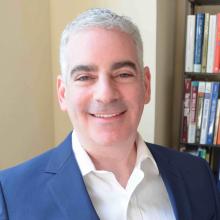Suicidal Thinking vs. Harm OCD Intrusive Thoughts: How Are They Similar & How They Are Different
Suicidal Thinking vs. Harm OCD Intrusive Thoughts: How Are They Similar & How They Are Different

Death by suicide is a major public health problem that profoundly impacts families in a way few other things do. Every year, many people at risk of suicide seek and get help, potentially saving themselves and their loved ones untold grief. The good news is that death by suicide can often be prevented through early screening and obtaining effective treatment. We as a society are recognizing the critical need for these services. As awareness of this health condition increases, more and more lives will be saved.
But this article is actually about an entirely different condition called Harm OCD. Harm OCD can hone in on the fear that you will lose control and hurt another person or yourself.
Harm OCD can involve intrusive thoughts about losing control and committing suicide. Although this form of Harm OCD has yet to be given an official name, we see it frequently enough in our practices that we decided it has earned itself its very own name, so for the purposes of this article we will be calling this flavor of OCD “Self-Harm OCD.“
Common symptoms of “Self-Harm OCD”
Self-Harm OCD is often experienced as a vicious cycle. The first step in this cycle involves a disturbing, scary, intrusive thought or image (this is the “O” or “obsession” part of OCD) about suicide. This is often followed by an exhausting and lengthy process of attempting to figure out if you are actually suicidal (this is the “C” or “compulsion” part of OCD) by mentally reviewing questions such as:
• “Do I want to harm myself?
• “Did I just move towards the window (or the knife or any other potentially dangerous object) because I want to harm myself? “What if I just lose it and hurt myself?”
• “Is this what it feels like to be suicidal?”
• “Is even thinking about this a sign that I am going crazy and could lose control and hurt myself?”
Certainty Seeking
At the heart of obsessive thoughts is the desperate need to know, with 100 percent certainty, that a feared outcome will not occur and that “everything is OK.” The neurological networks active in OCD are actually quite helpful in certain scenarios; humans would not have survived for very long without them. For example, it is helpful when you leave the house and forget to close your garage door to have the thought, “Oh no, I forgot to close the garage. I better head back home to close it, or someone is going to steal my new bike.” Unfortunately, some people are overly reliant on the certainty that comes from that sort of checking. You may be experiencing symptoms of OCD if you spend significant time engaging in mental gymnastics or physical compulsions to become 100% certain that a devastating outcome will not occur.
How can someone with Self-Harm OCD prove to themselves, beyond any doubt, that they won’t harm themselves? There are several often-used strategies. You can review the facts. You can remind yourself how many times you have actually tried to harm yourself. You can assess if you have been making a specific plan of how to harm yourself. You can assess if you have been gathering deadly means to harm yourself. But how can you PROVE to OCD that, with 100 percent certainty, that you won’t lose control and harm yourself? Ultimately none of us can have 100% certainty about what might or might not happen in the future.
The false promise of checking
And now we must give a brief apology. Perhaps you were lured into this article because you were hoping it would provide a handy way to help you differentiate between “true suicidal thinking” and obsessive / intrusive thoughts about suicide. Unfortunately that checklist not only does not exist but would be impossible to create.
Desperate google searches to find information that calms your anxiety and proves to you that you are “OK” are often just a certainty-seeking compulsion. The problem with engaging in any compulsion as a means to calm your anxiety is that it only “feeds the beast” of OCD, and strengthens the thinking patterns that brought on the initial thought. Inadvertently such compulsions increase the likelihood that, after a short period of relief, the intrusive thoughts will come back with a vengeance, demanding even more certainty that you are ok.
ERP for OCD
Effective treatment for harm-related OCD entails assisting clients in fully experiencing their scary thoughts (exposure) over and over again until their brains grow bored with the thoughts. This process is similar to watching a scary movie until it loses its shock value and shifts from being frightening to absurd. At the same time, treatment teaches strategies and to reduce or abandon behaviors meant to reduce anxiety (response prevention). This treatment approach is called exposure and response prevention (ERP) for OCD. ERP entails flipping the typical OCD experience on its head by practicing bringing on intrusive, anxiety provoking thoughts while disengaging from any compulsions (both physical and mental) that have been utilized to obtain short-term anxiety relief.
Conclusion
The good news is that as you work on moving past “Self-Harm OCD,” you will learn how to not only tolerate but eventually play with uncertainty. In doing so you will be opening yourself up to all of the mysteries and wonders of life. And that is where all the fun begins.
For assistance in moving past harm-related OCD thoughts, contact a mental health professional trained in cognitive-behavioral therapy (CBT) or pharmacotherapies, or both. You can search for a therapist in your area on the ADAA website to help you with this challenging, but very important work.












